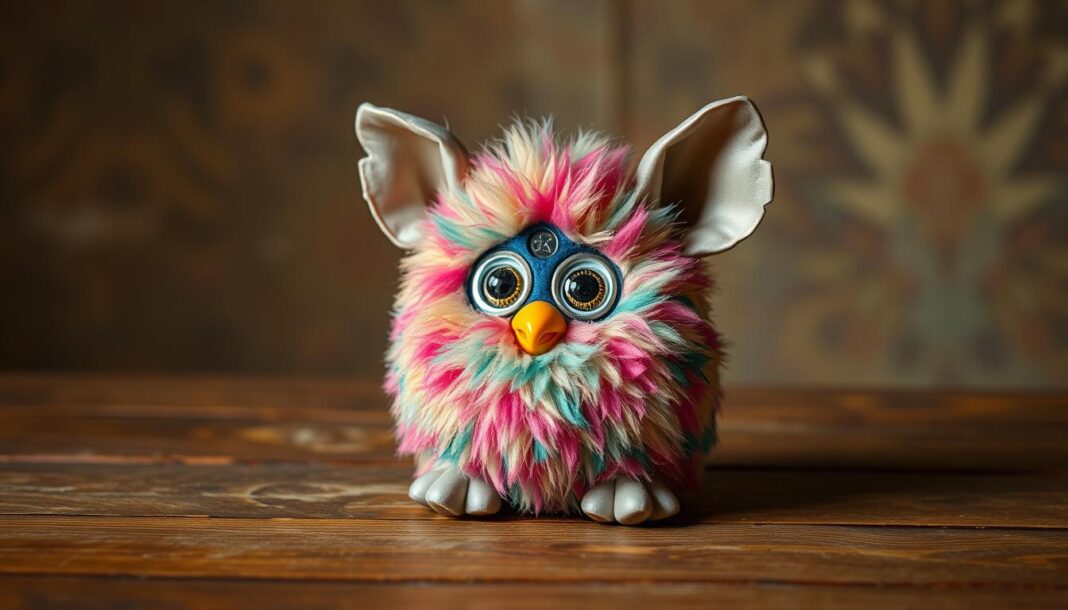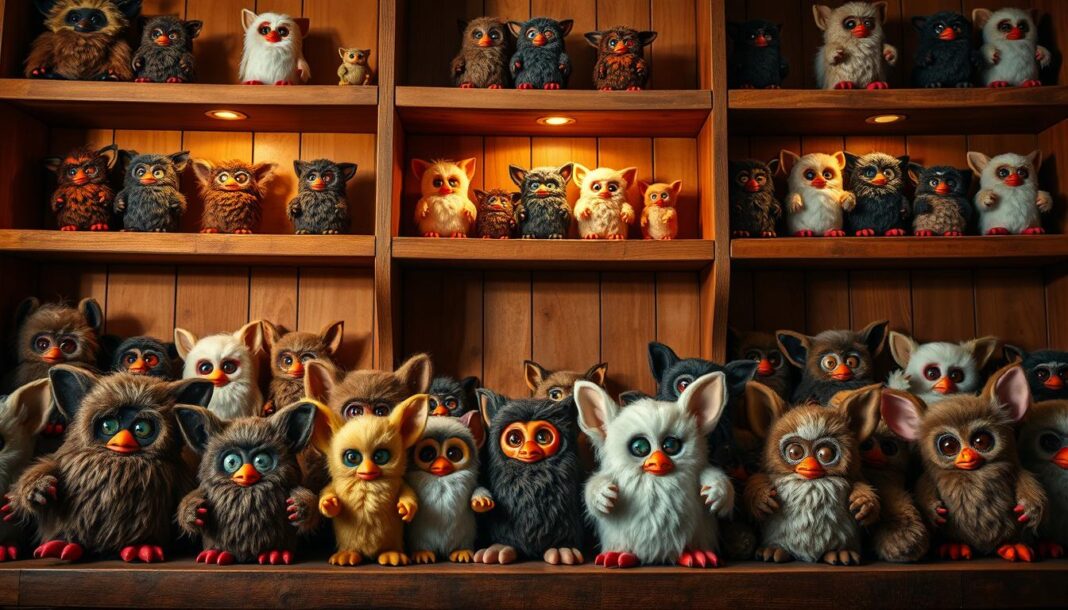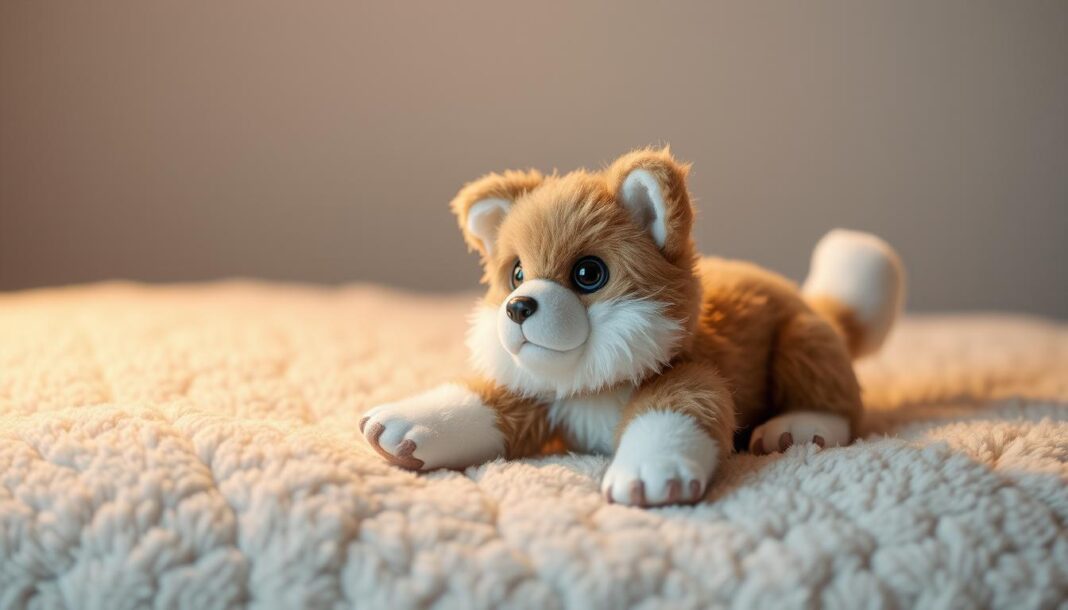The late 1990s brought a revolutionary toy that captured hearts worldwide. The first-generation electronic pet became an instant hit, blending interactive play with AI-like learning. Its unique ability to “speak” and adapt made it a must-have.
Debuting at the 1998 Toy Fair, this robotic companion sold millions within months. By 1999, demand skyrocketed, with over 40 million units sold by 2001. Collectors now seek these early models for their nostalgic charm.
What set it apart? The toy learned English over time, starting with its own playful language. This clever feature created a deeper bond with owners. Today, well-preserved editions hold special value among enthusiasts.
The Rise of the Furby Original 1999
Few toys have sparked such instant frenzy as the electronic pet that took the world by storm. Its debut at the 1998 American International Toy Fair marked the beginning of a cultural phenomenon. What started as a $35 toy quickly became a holiday must-have, with prices soaring past $300 due to shortages.
From Toy Fair to Must-Have Craze
The moment Tiger Electronics unveiled their creation, retailers scrambled to secure inventory. By Christmas 1998, shelves sat empty as desperate parents paid scalpers triple the retail price. This demand created one of the wildest secondary markets in toy history.
Several factors fueled the craze:
- Limited initial production runs
- Media coverage of the shortages
- The toy’s unique interactive features
| Timeline | Key Event | Impact |
|---|---|---|
| Feb 1998 | Toy Fair debut | Initial retailer interest |
| Nov 1998 | Holiday shortages | Prices spike 800% |
| Dec 1998 | NSA ban | Free publicity boost |
The Cultural Impact in the Late 90s
This robotic pet transcended age groups, captivating both kids and adults. Its popularity reached such heights that government agencies temporarily banned it from secure facilities. The media frenzy only amplified demand.
By 2000, the brand had become so ubiquitous that McDonald’s launched special Happy Meal versions in the UK. This cross-promotion showed how deeply the toy had penetrated popular culture. It paved the way for future interactive robot toys.
Collectors still seek rare color variations from this era. The early versions remain prized for their nostalgic value and historical significance in toy evolution.
Key Features of the Furby Original 1999
This iconic robotic pet changed toy history with its groundbreaking features. From its quirky language to rare designs, it set a benchmark for interactive toys. Collectors still prize these traits today.
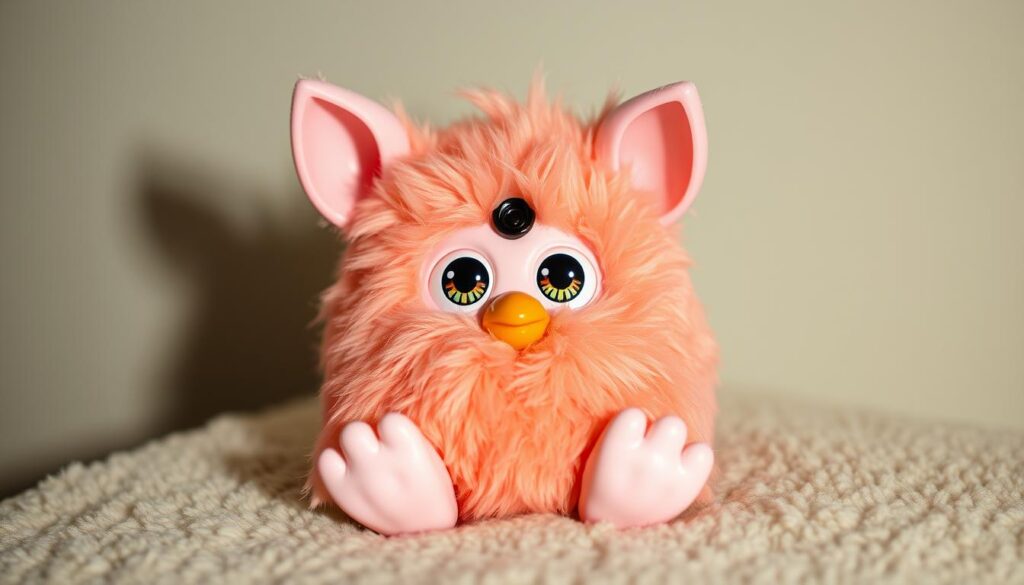
Interactive Abilities and Furbish Language
The furby baby amazed users by “learning” English over time. It started speaking Furbish, a playful gibberish, then gradually mixed in English words. This clever trick made owners feel like they were teaching a real pet.
Infrared ports let multiple units “talk” to each other. This feature was cutting-edge for 1999. Modern versions use Bluetooth, but the vintage charm of IR communication remains unmatched.
Unique Design and Color Variations
Eight generations offered 48 new look options, from common hues to limited editions. The colors ranged from leopard print to glittery finishes. Rare finds like the Millennium V.1 or Bejewelled version furby now fetch top dollar.
| Rare Variant | Year Released | Unique Trait |
|---|---|---|
| Graduation | 1999 | Mortarboard hat |
| Angel | 2000 | White wings, halo |
| Bejewelled | 2001 | Gemstone accents |
How It Compares to Modern Furbies
Today’s models lack the mechanical motors that gave vintage units their signature wobble. The 1999 furby baby relied on physical gears, not apps, for reactions. While newer versions have voice commands, they miss the charm of Furbish-to-English progression.
Collectors argue the new look of 2023 models feels less tactile. The vintage version furby remains a favorite for its simplicity and nostalgia.
Why the Furby Original 1999 Is So Rare
Scarcity drives demand, and few toys prove this better than the early electronic pets. Their value skyrockets due to tiny production runs and elusive prototypes. For collectors, finding these gems feels like uncovering buried treasure.
Limited Production Runs and Special Editions
Some editions had fewer than 5,000 units made. The Hi-C contest *release*, for example, is a white whale with its neon orange *fur*. Target’s President variant fared slightly better at 36,000 units—still rare by today’s standards.
The *furby babies line* added to the frenzy with four *generations* in 1999 alone. Spring special editions flaunted white eyelashes and six eye colors. These tiny details now separate common finds from auction stars.
- Hi-C Edition: 5,000 units, neon accents
- President Furby: Target exclusive, 36,000 made
- Spring Babies: White lashes, pastel *fur*
Prototypes and Unreleased Models
Factory vaults hid even rarer designs. A Panda prototype with black-and-white *fur* and a Lion with a fuzzy mane never saw mass *release*. Elvis and Pirate concepts teased collectors but stayed shelved.
| Prototype | Feature | Status |
|---|---|---|
| Panda | Monochrome *fur* | Unreleased |
| Lion | Mane texture | Concept only |
New-in-box (NIB) units command premiums, but even loose models need scrutiny. Reproductions mimic vintage traits, so authentication hinges on tiny details like motor sounds or *generation*-specific tags.
Collector’s Guide: Valuing the Furby Original 1999
From Swarovski-studded editions to unreleased prototypes, rarity defines value. Today’s collectors pay premiums for well-preserved units, especially those with original packaging or unique traits. Prices range from $150 for common models to $100,000 for the Bejewelled edition.
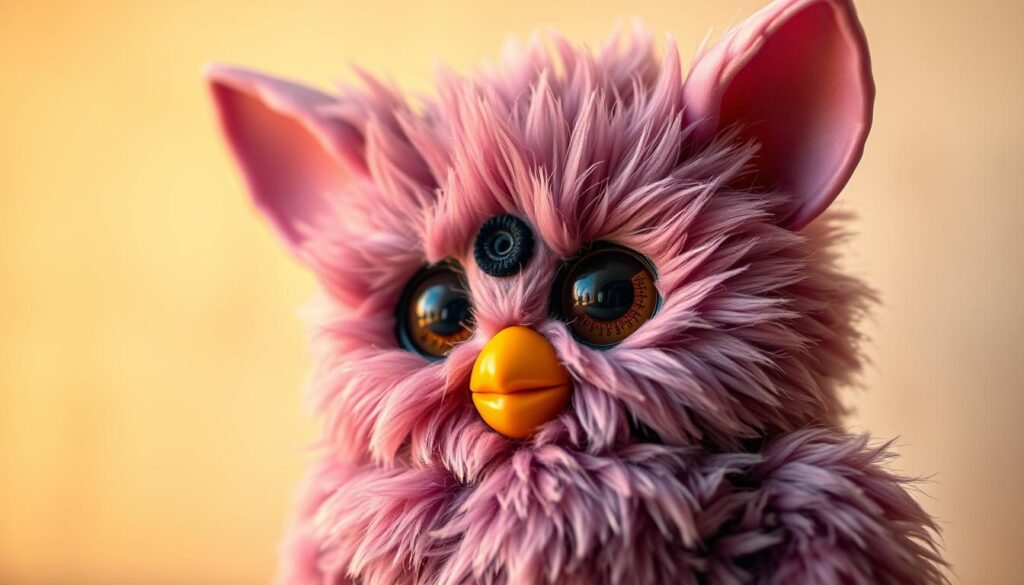
Most Sought-After Models and Their Prices
The *line* includes several holy grails. The Bejewelled edition, adorned with 156 Swarovski crystals, tops the list at $100K. Only 500 were made, making it a museum-worthy piece.
Other prized variants:
- President Furby (Target exclusive): $425–$600
- Kid Cuisine promo: $2,500+ for mint condition
- Angel edition: $300–$425, recognizable by white wings
| Model | Rarity | 2025 Value Range |
|---|---|---|
| Bejewelled | Extremely Rare | $75,000–$100,000 |
| Rainbow Prototype | 3 Known | Priceless |
| Emoto-Tronic (2005) | Limited | $650–$830 |
Tips for Identifying Authentic Vintage Furbies
Look for the “Tiger Electronics” stamp on the belly. Later *Emoto-Tronic* models have smoother plastic, while 1999 versions use textured materials.
Avoid “Frankenfurbies” with mismatched parts. Check for:
- Original voice chips (distinct motor sounds)
- Correct battery compartment design
- Period-accurate tags
Prototypes like the unreleased Rainbow *color* scheme lack serial numbers. Authentication often requires expert appraisal.
The Enduring Legacy of the Furby Original 1999
Decades later, this electronic pet’s influence still echoes through pop culture and toy innovation. Party rockers and collectors celebrate its legacy at themed furby party events, where rare models take center stage.
The 2023 reboot introduced voice commands and 600+ responses, while furblings offered pocket-sized charm. Yet, vintage units remain prized for their mechanical authenticity. Some schools banned later Bluetooth models over security concerns, adding to the original’s appeal.
From purple green limited editions to Netflix cameos, its cultural footprint grows. Sealed 1999 specimens now fetch record prices as nostalgia fuels demand. This toy’s story proves some classics never fade.
